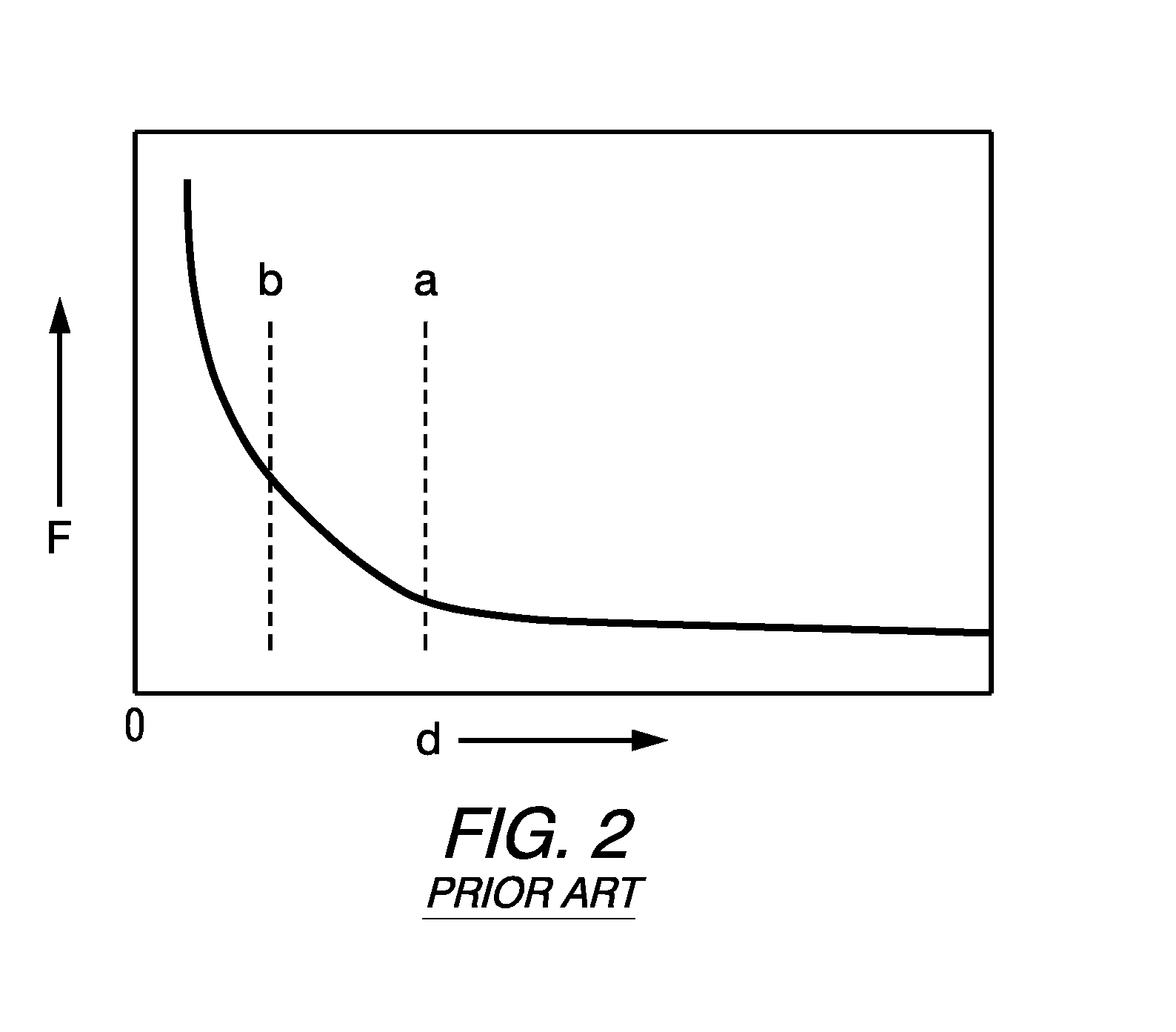Electromagnetic opposing field actuators
a technology of opposing field and actuator, which is applied in the direction of magnets, relays, magnetic bodies, etc., can solve the problems of affecting the actuation frequency of hydraulics and pneumatics, requiring heavy and bulky pressure sources, and noisy typical noise, and achieves a long (high strain) bidirectional stroke. , the effect of high uniform for
- Summary
- Abstract
- Description
- Claims
- Application Information
AI Technical Summary
Benefits of technology
Problems solved by technology
Method used
Image
Examples
example 1
[0163]Example Device A, was constructed using a 416 stainless steel main housing with outer diameter of 1.5 inches, total housing length of 1.622 inches, and a wall thickness of 0.12 inches. This device was constructed with two cylindrical field magnets made from NdFeB 1.2 inches in diameter and 0.390 inches thick with a 0.24 inch diameter hole in the center, magnetized through the thickness to 44MGOe. The field magnets are mounted within the housing with a working gap of 0.620 inches between the inward facing opposing poles. Within the ID of the housing, there is a recess cut into the wall of the housing for a ring formed by 8 curved focus magnet segments which are 0.040 inches thick and 0.310 inches high. The center of this recess is located at the center of the working gap of the field magnets. The focus magnets are mounted within the housing such that their inward facing surfaces are flush with the adjacent inside diameter of the housing. The focus magnets are made from NdFeB se...
example 2
[0175]Example Device B was constructed with different dimensions from Example Device A. Example Device B weighed 2.1 kg, measuring 7.2 cm long, 7.6 cm diameter, generating a bidirectional symmetrical working stroke of 1 cm with a continuous linear force output rating up to 130N and an impulse rating of 900N (2 second intervals) with a frequency response of 100 Hz.
example 3
[0176]A family of seven devices are designed and modeled based on a 3 inch outside diameter housing for a device similar to the device shown in FIG. 3 with actuation ranges of 2 mm to 5 cm to demonstrate the range of actuation parameters obtainable within a limited design envelope. For this example the size and power of the field magnets as well as the size, number of turns, and power applied to the coil are all held constant. The thickness of the housing is held constant to the extent possible while allowing minor variation to accommodate the focus magnets. These devices are designed with a 416 stainless steel housing having an ID of 7 cm (2.75 inch) and a nominal outer diameter of 8.4 cm (3.3 inch) with a typical wall thickness of 7 mm (0.275 inch). The length of the housing is varied to accommodate the actuation distance as required, and the outer diameter increases slightly in the cases with longer actuation distance to accommodate the focus magnets. This device is constructed w...
PUM
 Login to View More
Login to View More Abstract
Description
Claims
Application Information
 Login to View More
Login to View More - R&D
- Intellectual Property
- Life Sciences
- Materials
- Tech Scout
- Unparalleled Data Quality
- Higher Quality Content
- 60% Fewer Hallucinations
Browse by: Latest US Patents, China's latest patents, Technical Efficacy Thesaurus, Application Domain, Technology Topic, Popular Technical Reports.
© 2025 PatSnap. All rights reserved.Legal|Privacy policy|Modern Slavery Act Transparency Statement|Sitemap|About US| Contact US: help@patsnap.com



